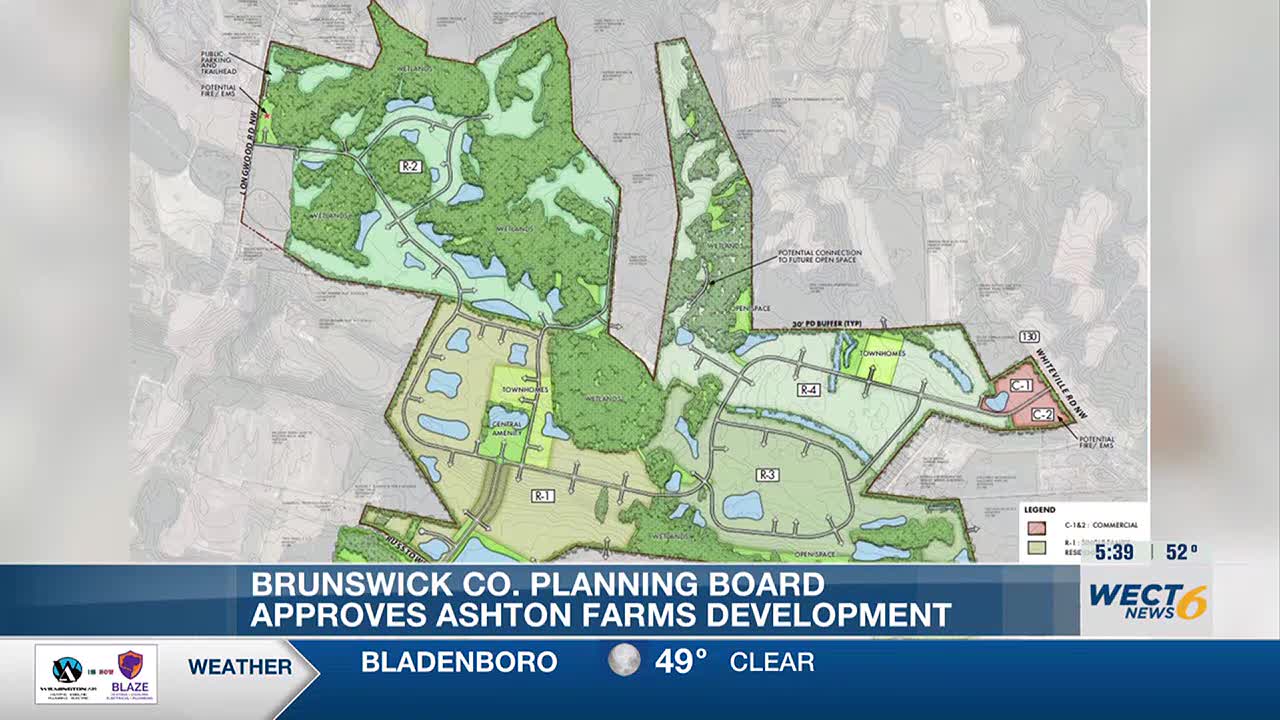Report on the New Bedford Ocean Cluster’s Contribution to Sustainable Development
Introduction: A Strategic Pivot Towards a Sustainable Blue Economy
The City of New Bedford, a historic maritime hub, is undergoing a significant transformation. Leveraging its legacy as a leading commercial fishing port, the city is actively diversifying its ocean-based economy through the strategic initiatives of the New Bedford Ocean Cluster (NBOC). Established in 2017 with support from the New Bedford Port Authority, the NBOC aims to position the city as the premier ocean economy on the U.S. East Coast, with a strong focus on aligning economic growth with the United Nations Sustainable Development Goals (SDGs).
A Framework for Sustainable Growth and Innovation
Adopting a Collaborative Cluster Model (SDG 17)
The NBOC’s strategy is inspired by successful international precedents, particularly the Iceland Ocean Cluster. This approach emphasizes collaboration and resource optimization to enhance economic profitability and environmental sustainability. By fostering partnerships between industries, academia, and public agencies, the NBOC exemplifies the principles of SDG 17 (Partnerships for the Goals). A key lesson from the Icelandic model is the potential for creating circular economies, such as utilizing fish byproducts for new markets, which directly supports SDG 12 (Responsible Consumption and Production).
Pillars for a Resilient and Diversified Port Economy
The NBOC has identified four primary pillars to guide its development efforts, each contributing to specific SDGs:
- Commercial Fishing & Processing: Enhancing the sustainability and technological advancement of the nation’s top commercial fishing port, contributing to SDG 8 (Decent Work and Economic Growth) and SDG 14 (Life Below Water).
- Offshore Renewables: Championing clean energy projects to combat climate change, directly advancing SDG 7 (Affordable and Clean Energy) and SDG 13 (Climate Action).
- Aquaculture: Developing sustainable food production systems to support food security and responsible resource management, in line with SDG 2 (Zero Hunger) and SDG 14.
- Marine Innovation & Technology: Integrating advanced technologies like AI, automation, and robotics to support all pillars, fostering progress towards SDG 9 (Industry, Innovation, and Infrastructure).
Driving Tangible Progress in Sustainable Development
Advancing Clean Energy and Modernizing Infrastructure (SDG 7 & SDG 9)
New Bedford is at the forefront of the U.S. renewable energy transition. The port serves as the primary marshalling base for Vineyard Wind I, the nation’s first commercial-scale offshore wind project. This leadership in clean energy has attracted significant investment and new businesses to the region. Concurrently, the Port Authority is managing capital infrastructure projects valued at nearly $150 million. These investments are modernizing the port and revitalizing underutilized properties, transforming the city’s waterfront and contributing to SDG 9 and SDG 11 (Sustainable Cities and Communities).
Cultivating an Ecosystem for Marine Technology (SDG 9)
The NBOC’s work has spurred an increase in technology startup activity. Companies like Orpheus Ocean, specializing in deep-sea robotics, are relocating to New Bedford to test and deploy their innovations. The cluster facilitates direct connections between these tech firms and traditional industries, creating immediate value. For example, a new anti-fouling technology company found widespread interest among local fishing fleets, demonstrating the successful integration of innovation within the existing economy and advancing SDG 9.
Fostering Collaboration and a Just Transition
Balancing Tradition and Progress (SDG 8 & SDG 17)
The introduction of new industries, particularly offshore wind, has created challenges with the traditional commercial fishing sector. The NBOC acts as a crucial liaison between these industries, mediating concerns and identifying opportunities for shared prosperity. By facilitating the placement of commercial fishing industry workers in jobs supporting offshore wind development, the NBOC ensures that economic diversification benefits all community members, reflecting a commitment to a just transition and the principles of SDG 8 and SDG 17.
Conclusion: A Replicable Blueprint for a Sustainable Future
The New Bedford Ocean Cluster has established a clear vision: to create a leading, multi-faceted ocean economy that honors its maritime heritage while embracing innovation. The goal is to maintain New Bedford’s status as the number one U.S. commercial fishing port while simultaneously growing its capacity in renewable energy, marine technology, and other sustainable sectors. This integrated approach, deeply rooted in collaboration and alignment with the Sustainable Development Goals, serves as a powerful and replicable blueprint for other port cities worldwide seeking to build resilient and prosperous blue economies.
Which SDGs are addressed or connected to the issues highlighted in the article?
-
SDG 7: Affordable and Clean Energy
The article directly addresses this goal through its focus on offshore wind energy. It highlights that the port of New Bedford is the “primary marshalling base for Vineyard Wind I – the nation’s first commercial-scale offshore wind project.” This initiative represents a significant step towards increasing the share of renewable energy, a key aspect of SDG 7.
-
SDG 8: Decent Work and Economic Growth
This goal is central to the article. The establishment of the New Bedford Ocean Cluster (NBOC) is aimed at economic diversification and growth. The article states the goal is to move beyond being a “one-industry dominated port” and to “diversify our blue economy.” This includes creating new business opportunities, attracting investment, and fostering job growth by integrating new industries like offshore wind and marine technology with the traditional fishing sector.
-
SDG 9: Industry, Innovation and Infrastructure
The article extensively covers themes of innovation and infrastructure development. It mentions “capital infrastructure projects worth close to $150 million” to modernize the port. Furthermore, it emphasizes the integration of new technologies like “AI, automation, sensors, and advanced materials” and the incubation of marine technology startups, which directly aligns with the goal of building resilient infrastructure and fostering innovation.
-
SDG 11: Sustainable Cities and Communities
The efforts described in the article contribute to making the coastal city of New Bedford more economically resilient and sustainable. The revitalization of “older, underutilised existing properties” for new industrial developments is a direct contribution to inclusive and sustainable urbanization. The project aims to balance economic progress with the city’s traditions, ensuring sustainable community development.
-
SDG 14: Life Below Water
The article’s focus is on creating a sustainable “ocean economy.” It discusses the sustainable management of the commercial fishing industry, the development of aquaculture, and the innovative use of marine resources. The example from the Iceland Ocean Cluster, which utilizes “cod skins and other byproducts for cosmetics and pharmaceuticals,” points towards reducing waste and sustainably using marine resources, which is a core principle of SDG 14.
-
SDG 17: Partnerships for the Goals
Collaboration is a recurring theme. The article highlights the partnership between the NBOC and the New Bedford Port Authority, as well as with “public agencies, academia, and workforce and training institutions.” The formal Memorandum of Understanding with the Iceland Ocean Cluster is a clear example of a partnership to share knowledge and achieve common goals, embodying the spirit of SDG 17.
What specific targets under those SDGs can be identified based on the article’s content?
-
Target 7.2: Increase substantially the share of renewable energy in the global energy mix.
The article identifies New Bedford’s role in supporting the “nation’s first commercial-scale offshore wind project,” Vineyard Wind I. This directly contributes to increasing the production and use of renewable energy.
-
Target 8.2: Achieve higher levels of economic productivity through diversification, technological upgrading and innovation.
The NBOC’s strategy is built on this target. The article explains the plan to diversify the port’s economy by adding pillars like “Offshore Renewables, Aquaculture, and Marine Innovation & Technology” to the existing commercial fishing industry, thereby increasing economic productivity.
-
Target 9.1: Develop quality, reliable, sustainable and resilient infrastructure… to support economic development.
The article explicitly mentions that the Port Authority is “managing capital infrastructure projects worth close to $150 million.” This investment is aimed at modernizing the port to support both traditional and new industries, making the infrastructure more resilient and capable of fostering economic growth.
-
Target 9.5: Enhance scientific research, upgrade the technological capabilities of industrial sectors… and encourage innovation.
The focus on “embracing new sectors like AI, automation, sensors, and advanced materials” and supporting marine technology startups like Orpheus Ocean directly aligns with this target of upgrading technological capabilities and encouraging innovation within the maritime industry.
-
Target 14.7: Increase the economic benefits… from the sustainable use of marine resources, including through sustainable management of fisheries, aquaculture…
The article’s goal is to build a leading “ocean economy” by sustainably managing its number one commercial fishing port while developing new sectors like aquaculture. The mention of using fish byproducts for new markets, inspired by the Iceland model, is a direct example of increasing economic benefits from the sustainable use of marine resources.
-
Target 17.17: Encourage and promote effective public, public-private and civil society partnerships.
The New Bedford Ocean Cluster (NBOC) itself is an example of such a partnership, being “part-funded by New Bedford Port Authority.” The article emphasizes that collaboration between industries, public agencies, and academic institutions has been key to its success.
Are there any indicators mentioned or implied in the article that can be used to measure progress towards the identified targets?
-
Indicator: Investment in infrastructure.
The article provides a specific monetary value: “capital infrastructure projects worth close to $150 million.” This is a direct quantitative indicator of progress towards building resilient infrastructure (Target 9.1).
-
Indicator: Development of renewable energy capacity.
The existence and scale of the Vineyard Wind I project, described as the “nation’s first commercial-scale offshore wind project,” serves as a key indicator of the increased share of renewable energy (Target 7.2).
-
Indicator: Economic diversification and new business formation.
The article implies this through statements like “New businesses are landing here, including ocean technology startups and offshore wind supply chain companies” and the establishment of four distinct pillar industries. The number of new companies and the growth in non-fishing sectors would be metrics for this.
-
Indicator: Revitalization of underutilized assets.
Progress can be measured by tracking the number of “older, underutilised existing properties that will now be activated” due to new private investment, as mentioned in the article. This indicates sustainable urban and industrial development (SDG 11).
-
Indicator: Job creation in new and existing sectors.
The article implies job creation as an indicator by stating, “we have been successful in getting our commercial fishing industry jobs supporting offshore wind development.” The number of jobs created through this cross-sector collaboration can be measured.
-
Indicator: Adoption of new technologies.
The article mentions a new marine tech company testing “anti-fouling technology for vessels” and the interest from local fishing companies. The rate of adoption of such technologies by traditional industries is a clear indicator of innovation and technological upgrading (Target 9.5).
| SDGs | Targets | Indicators |
|---|---|---|
| SDG 7: Affordable and Clean Energy | 7.2: Increase substantially the share of renewable energy in the global energy mix. | Development of the “nation’s first commercial-scale offshore wind project” (Vineyard Wind I). |
| SDG 8: Decent Work and Economic Growth | 8.2: Achieve higher levels of economic productivity through diversification, technological upgrading and innovation. | Establishment of four pillar industries (Commercial Fishing, Offshore Renewables, Aquaculture, Marine Tech) to diversify from a single industry. |
| SDG 9: Industry, Innovation and Infrastructure | 9.1: Develop quality, reliable, sustainable and resilient infrastructure.
9.5: Enhance scientific research, upgrade the technological capabilities… and encourage innovation. |
Investment value of “$150 million” in capital infrastructure projects.
Number of new technology startups (e.g., Orpheus Ocean) and adoption of new tech (e.g., anti-fouling technology). |
| SDG 11: Sustainable Cities and Communities | 11.a: Support positive economic, social and environmental links… by strengthening national and regional development planning. | Activation and redevelopment of “older, underutilised existing properties.” |
| SDG 14: Life Below Water | 14.7: Increase the economic benefits from the sustainable use of marine resources, including through sustainable management of fisheries, aquaculture. | Development of aquaculture as a pillar industry; utilization of fish byproducts (e.g., cod skins) for new markets. |
| SDG 17: Partnerships for the Goals | 17.17: Encourage and promote effective public, public-private and civil society partnerships. | Creation of the NBOC as a public-private partnership; formal collaboration with the Iceland Ocean Cluster. |
Source: businessfocusmagazine.com







